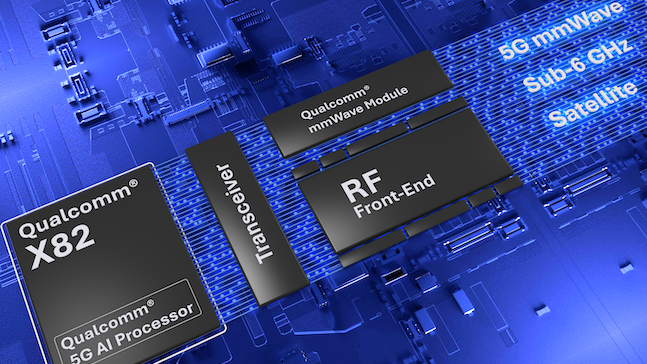Qualcomm Unveils Parallel Decoding for Ultra-Fast AI on Mobile Devices

Qualcomm's Breakthrough: Parallel Decoding on Mobile
Qualcomm AI Research has achieved a significant milestone in bringing next-generation AI interactions to smartphones, announcing at MWC 2025 the first demonstration of self-speculative parallel decoding for large language models (LLMs) running directly on mobile devices[1].
Why This Matters
Consumers expect chatbots and digital assistants to respond instantly. Traditionally, language models required substantial cloud resources and experienced lag on smartphones due to computational demands. Qualcomm's innovation eliminates this hurdle, enabling ultra-fast and natural conversations with on-device AI, scaling to consumer devices without sacrificing accuracy or privacy[1].
How Parallel Decoding Works
The technique leverages self-speculative decoding, a parallel approach that accelerates token generation by allowing the target model to handle both candidate and final outputs—removing the need for a secondary, less-accurate draft model[1]. For users, this translates to:
- Significantly faster response times from mobile AI assistants
- Enhanced privacy, as data never needs to leave the device
- Lower energy consumption compared to prior approaches
During Snapdragon Summit 2024, Qualcomm demonstrated these techniques in live, on-device AI models, showing chats and assistants that responded nearly as quickly as human partners[1].
From Edge Intelligence to Agentic AI
This decoding advance is part of a broader Qualcomm push to bring LLM-powered intelligence to the edge. Alongside parallel decoding, Qualcomm presented:
- Multimodal models that combine vision, language, and sensor data for richer user experiences
- Retrieval-Augmented Generation (RAG) on mobiles, integrating chat history and third-party data for more contextual responses
- New agentic AI methods for personalized, on-device planning and decision-making
Collectively, these advances put smartphones and tablets at the forefront of edge AI—capable of running sophisticated reasoning, vision, and agentic systems previously limited to cloud GPUs[1].
Looking Ahead: The Future of On-Device AI
Experts see Qualcomm’s on-device parallel decoding as a leap towards a privacy-conscious, ubiquitous AI future. As users demand more from portable devices and regulations push for stronger data protection, running advanced generative models locally is poised to reshape how billions interact with technology[1]. Industry observers expect other hardware vendors to follow suit, sparking a race for ever-faster, more capable on-device AI assistance.
Qualcomm’s breakthroughs mark a turning point where advanced generative AI models become not just powerful, but truly mobile—delivering performance, privacy, and intelligence at the edge.
How Communities View Qualcomm’s Parallel Decoding Breakthrough
The AI community is abuzz following Qualcomm’s demonstration of parallel decoding for LLMs on mobile at MWC 2025. The announcement sparked lively debate on X/Twitter and r/MachineLearning, with discussion splitting across several camps:
-
Mobile-First AI Enthusiasts (≈40%): Users like @edgevisionary hail the tech as a game-changer for fast, private AI—“Natural, lightning-fast chat without cloud lag is finally here.”
-
Skeptics on Real-World Performance (≈25%): Posters in r/Android and tweets from @dev_david question whether real user scenarios will match the demoed speed and accuracy, asking for transparent benchmarks on older and mid-range devices.
-
Privacy & Security Advocates (≈20%): Security-minded voices (e.g., @dataprivacykate) praise the approach for keeping data local, but urge Qualcomm to publish transparency reports and clarify on-device model updates.
-
Industry Watchers & Developers (≈15%): Notable figures such as @chipreport and ML engineers on r/edgeAI are excited about integrating edge LLM APIs into apps, predicting rapid developer adoption.
Overall, sentiment is strongly positive. Experts note this signals a new era of on-device AI, with Qualcomm setting the pace for what mobile chips and software can deliver outside the cloud.